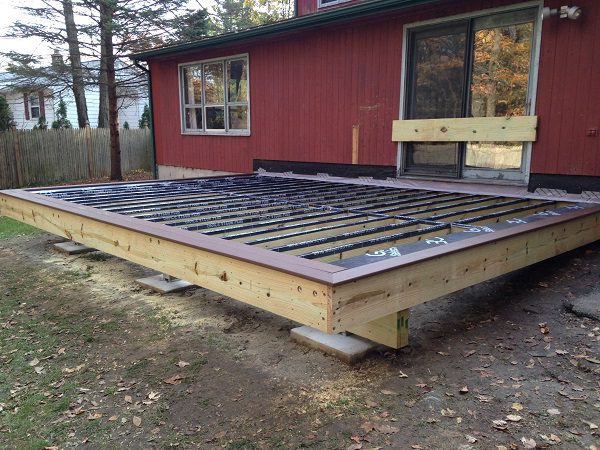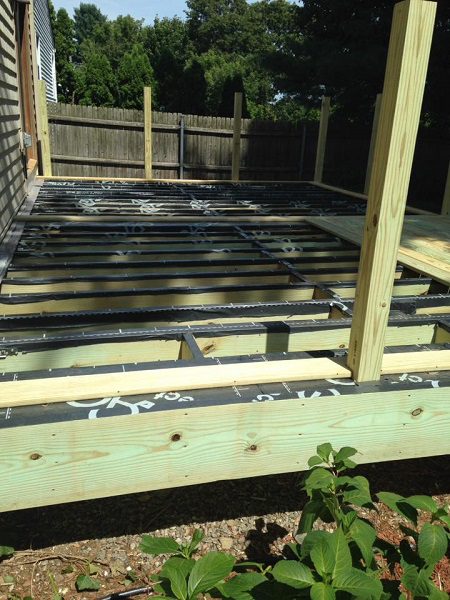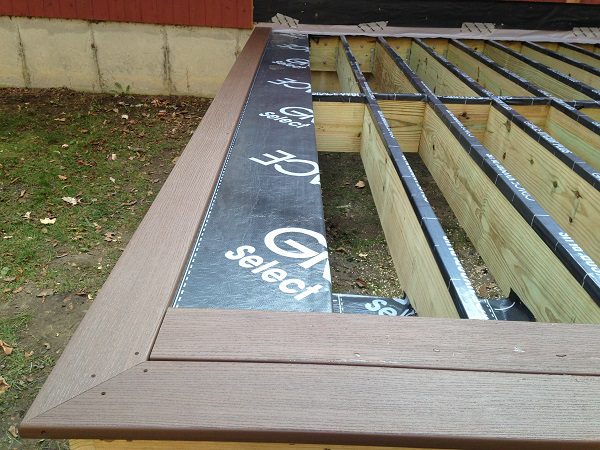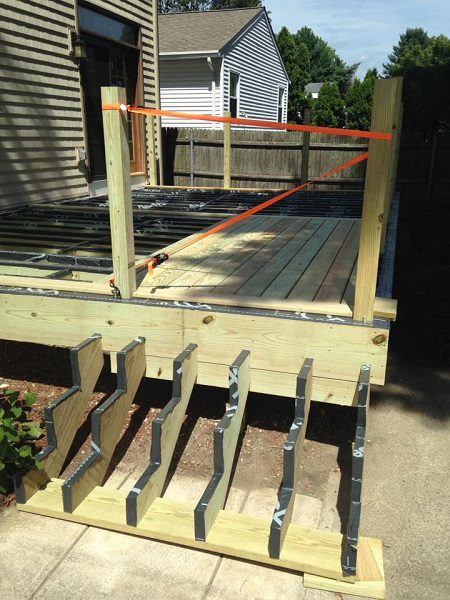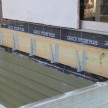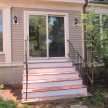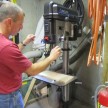Rubber Flashing On Deck Joists
Benefit’s of Flashing Deck Joists
Water and wood do not play nice together, and over a long period of time unprotected wood, even pressure treated can rot. But by protecting the wood, it can extend the life of your deck. Most decks are still framed with pressure treated lumber. Applying a self-adhesive membrane to the wood will keep the water off. This practice is currently not code but a better way to increase the longevity of your joists.
For best rot protection coverage you’ll want to apply this protective membrane to the following areas:
- Tops of all the deck joists
- Top of the center beam, any beams
- Tops of your stair stringers
- The bottoms where the wood comes in contact with the ground
An Ounce of Prevention
Adding rubber flashing on deck joists will prevent rot or wood decay, while prolonging the life of the framing. It’s also a nice cushion between the deck boards and the deck joists.
I have been using Grace Vycor Deck Protector since it premiered one year at the JLC LIVE New England trade show. Attending the trade shows keeps you on top of your game with the newest products and sets you apart from your competition.
I remember a time before self adhering membranes were available. I would use 15lb felt, cut into 3” strips to the length of your choice and fasten it down with galvanized staples. Now with the self adhering membrane, installation is quick and it really grabs hold of the joists.
The Grace Vycor Deck Protector self adhering membrane comes in two sizes, 4” and 9”. The 4” is the perfect width for wrapping the top of a single deck joist and the 9” is recommend for deck ledgers.
The Real Benefit
Applying rubber flashing on deck joists prevents moisture from sitting on the tops of the joists which could have potentially caused rot. The space between deck boards is a haven for dirt, debris and leaves. When these items get wet they tend to hold moisture which is a major ingredient for rot.
The rubber flashing also helps seal around the deck-board fasteners, reducing moisture penetration
Ledgers and Beams
The 9” roll will provide a protective barrier between the joist hangers and the deck ledger. This step is recommended because of the new and environmentally safe way wood is now being treated. The preservatives make it 2-1/2 to 4 times more corrosive to galvanized metal connectors and flashing. Using this tape as a barrier between the two creates an effective break.
When building a deck, I also like to have a full width, roll of Grace Ice & Water on hand. The reason is, you can wrap the outside runs in a single piece; no seams. By slicing a 3’ roll down the middle you will have two perfectly sized pieces to complete the task. It can be easily cut with a sharp utility knife. I recommend changing the blade often to maintain a clean sharp cut. See picture below for a clear example of why I prefer the wider width Ice & Water.
Staples Back Up Adhesive
Lastly, always have a tack hammer with galvanized staples handy. I have run into issues where mechanical fastening was needed because the self adhesive failed on the edges or the sides. In this incidence, try to staple along the sides of the joists so staples won’t be visible. That would be a huge mood kill if you or your client can see a staple peeking through the deck board spacing.
When looking for a self adhesive barrier, I recommend the Grace Vycor Deck Protector. My local lumber yard has it stocked on the shelf which means no special ordering and the cost is on point. A 4” roll is about $20.00 a roll and the 9” roll is around $41.00. I have been using Grace Products for as long as I can remember and trust the brand. However, there are other brands available on the market if Vycor is not for you.
Applying rubber flashing on deck joists will give you an edge over your competition. You’re providing your clients the best practices in the industry. In my book this is money well spent.



